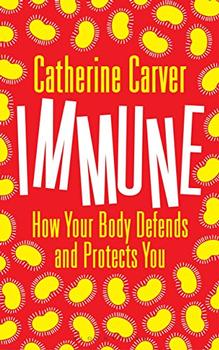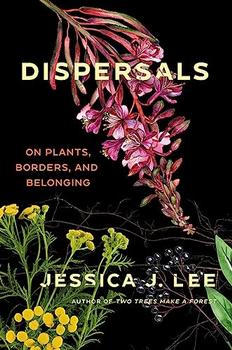Summary | Excerpt | Reviews | Beyond the Book | Readalikes | Genres & Themes | Author Bio

 Book Reviewed by:
Book Reviewed by:
Natalie Vaynberg
Buy This Book
Lactoferrin has a more humble heritage but it does have the honour of translating roughly as 'milk iron'. What makes it cool is its ability to change the level of iron in blood, milk and other bodily secretions. It was first discovered in milk, hence the name, but we know lactoferrin, like lysozyme, also exists in tears, snot and saliva. It has an incredible propensity to bind iron, and in doing so removes a key mineral that bacteria rely upon to grow. Some bacteria are wise to this and use iron depletion as an indicator that they are inside an animal. Other bacteria have developed their own powerful iron-binding molecules called 'siderophores' which are designed to snatch the iron from the jaws of lactoferrin. Perhaps an even smarter strategy is just to opt out of the iron wars altogether. Borrelia burgdorferi, the bacterium responsible for Lyme disease, has replaced iron with manganese as the essential metal element in its enzymes, so an iron-depleted environment is no real threat.
Continuing the immune system tour of the letter 'L', the third key protein in tears is a lipocalin. The proteins of the lipocalin family are an ancient and prolific lot, found not only in humans but in a plethora of other species from rhinos to lobsters. They perform a variety of functions, from pheromone transport to Vitamin A absorption, but the one we're interested in fortifies our tears. About 20 per cent of the protein in our tears is made up of tear lipocalin, whose neat structure includes a pocket for binding a multitude of molecules. This clever pocket allows tear lipocalin to bind the bacterial siderophores we met in the last paragraph, neutralising the bacterium's ability to steal iron from us and leaving it depleted.
Underestimated earwax
Hopefully you've now warmed to the wonder of your own secretions. If not, perhaps I can win you round with another disgustingly cool (and slightly sticky) soldier of the innate immune system: earwax. This humble amber putty is more revealing and intriguing than you'd think. For instance there's evidence it has a distinct smell that varies between races (male Caucasian earwax had higher levels of odorous compounds than that of East Asian men). It's also been used to deconstruct the life story of a blue whale, whose earwax was harvested after death. By analysing the chemical composition along the 24cm (9.4in) plug of earwax, researchers were able to see when in its life the whale had been in polluted water. They were also able to see a spike in the stress hormone cortisol as it reached sexual maturity and faced the challenge of competing for a girl.
Unlike blue whales, we don't retain our earwax. Indeed as a species we are unique in the animal kingdom for many reasons, but our desperate need to get rid of earwax is surely one of the most peculiar. There are hundreds of earwax removal products on the market; some cost more per millilitre than designer perfume. Others are positively dangerous. Take the 'ear candle', a 25cm (10in) hollow cone made of fabric soaked in paraffin or beeswax, which people put in their ear and set on fire in the mistaken belief it will draw out their earwax (or purify their blood/cure cancer/strengthen their brain. Honestly). In reality ear candles are far more likely to drip hot wax on your face, puncture your eardrum or start a fire. Consequently the US Food and Drug Administration has warned people to steer well clear of them, and has taken to seizing shipments of the dangerous devices.
Putting a burning candle in your ear is a prima facie bad plan, but a more widespread source of harm comes in a far more innocuous shape: the cotton bud. Every year in the UK more people turn up in the emergency department with injuries from cotton buds than from razor blades. Over a third of all British adults continue to jam cotton buds in their ears, despite the fact they are a common cause of hearing loss due to impacted earwax. Perhaps this is because we perceive earwax to be unsightly and dirty, which is why digging it out leaves you feeling clean and oddly satisfied.
Excerpted from Immune by Catherine Carver. Copyright © 2017 by Catherine Carver. Excerpted by permission of Bloomsbury USA. All rights reserved. No part of this excerpt may be reproduced or reprinted without permission in writing from the publisher.




A classic is a book that has never finished saying what it has to say
Click Here to find out who said this, as well as discovering other famous literary quotes!
Your guide toexceptional books
BookBrowse seeks out and recommends the best in contemporary fiction and nonfiction—books that not only engage and entertain but also deepen our understanding of ourselves and the world around us.